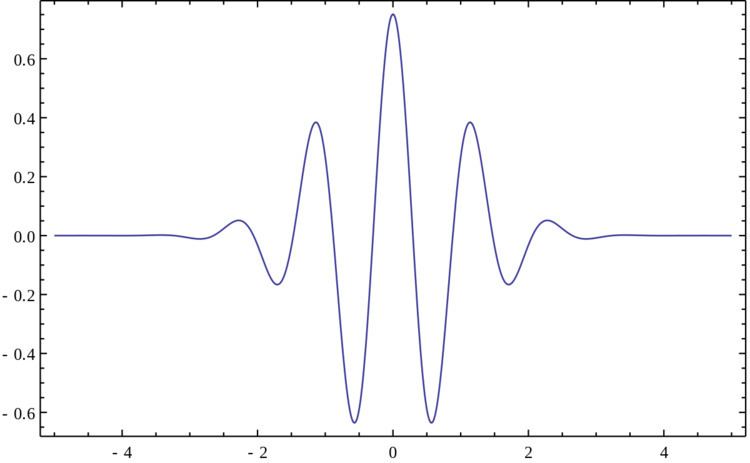 | ||
In mathematics, the Morlet wavelet (or Gabor wavelet) is a wavelet composed of a complex exponential (carrier) multiplied by a Gaussian window (envelope). This wavelet is closely related to human perception, both hearing and vision.
Contents
History
In 1946, physicist Dennis Gabor, applying ideas from quantum physics, introduced the use of Gaussian-windowed sinusoids for time-frequency decomposition, which he referred to as atoms, and which provide the best trade-off between spatial and frequency resolution. These are used in the Gabor transform, a type of short-time Fourier transform. In 1984, Jean Morlet introduced Gabor's work to the seismology community and, with Goupillaud and Grossmann, modified it to keep the same wavelet shape over equal octave intervals, resulting in the first formalization of the continuous wavelet transform. (See also Wavelet history)
Definition Morlet wavelet
The wavelet is defined as a constant
where
The Fourier transform of the Morlet wavelet is:
The "central frequency"
which can be solved by a fixed-point iteration starting at
The parameter
For signals containing only slowly varying frequency and amplitude modulations (audio, for example) it is not necessary to use small values of
The wavelet exists as a complex version or a purely real-valued version. Some distinguish between the "real Morlet" vs the "complex Morlet". Others consider the complex version to be the "Gabor wavelet", while the real-valued version is the "Morlet wavelet".
Use in medicine
The Morlet wavelet transform method presented offers an intuitive bridge between frequency and time information which can clarify interpretation of complex head trauma spectra obtained with Fourier transform. The Morlet wavelet transform, however, is not intended as a replacement for the Fourier transform, but rather a supplement that allows qualitative access to time related changes and takes advantage of the multiple dimensions available in a free induction decay analysis.
The application of the Morlet wavelet analysis is also used to discriminate abnormal heartbeat behavior in the electrocardiogram (ECG). Since the variation of the abnormal heartbeat is a non-stationary signal, this signal is suitable for wavelet-based analysis.
Use in music
The Morlet wavelet transform method is applied to music transcription. It produces very accurate results that were not possible using Fourier transform techniques. The Morlet wavelet transform is capable of capturing short bursts of repeating and alternating music notes with a clear start and end time for each note.
